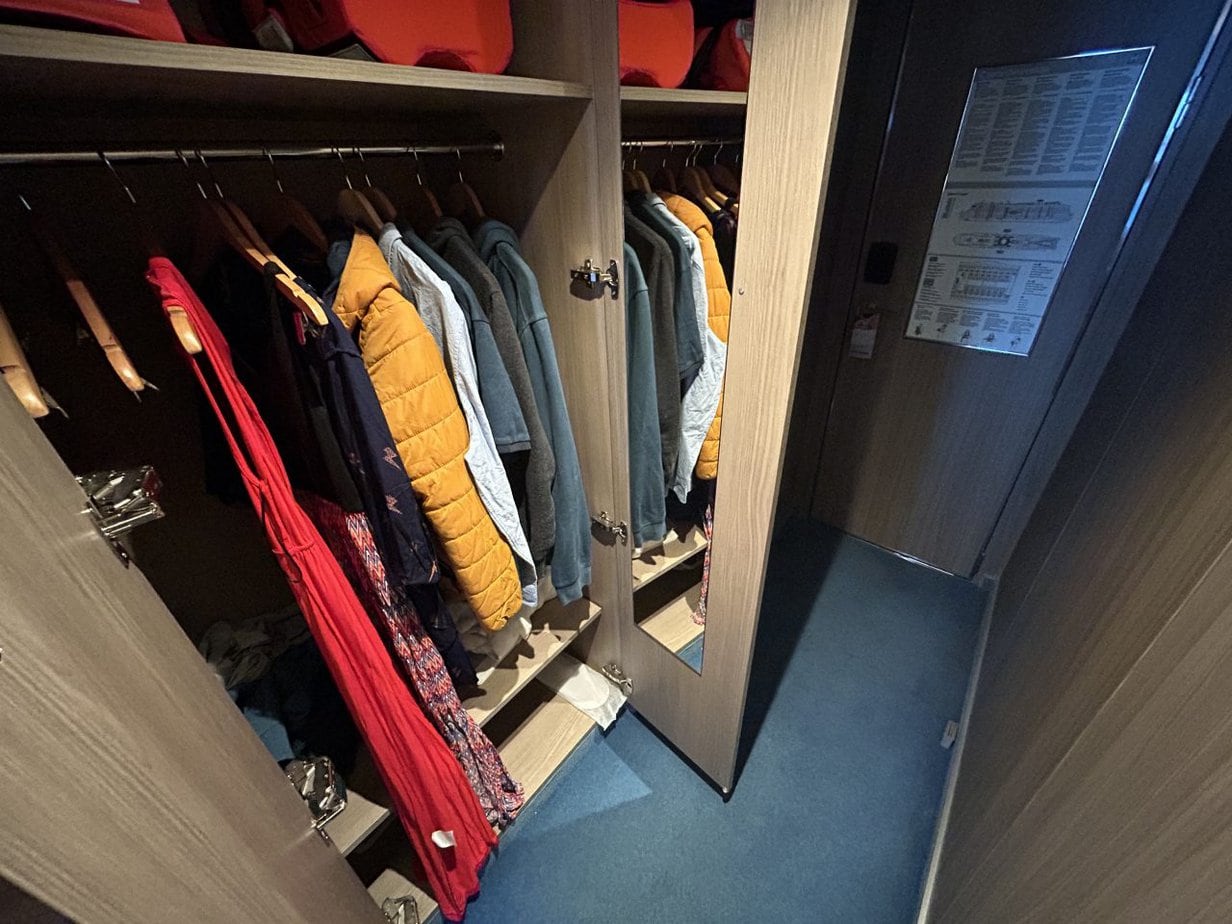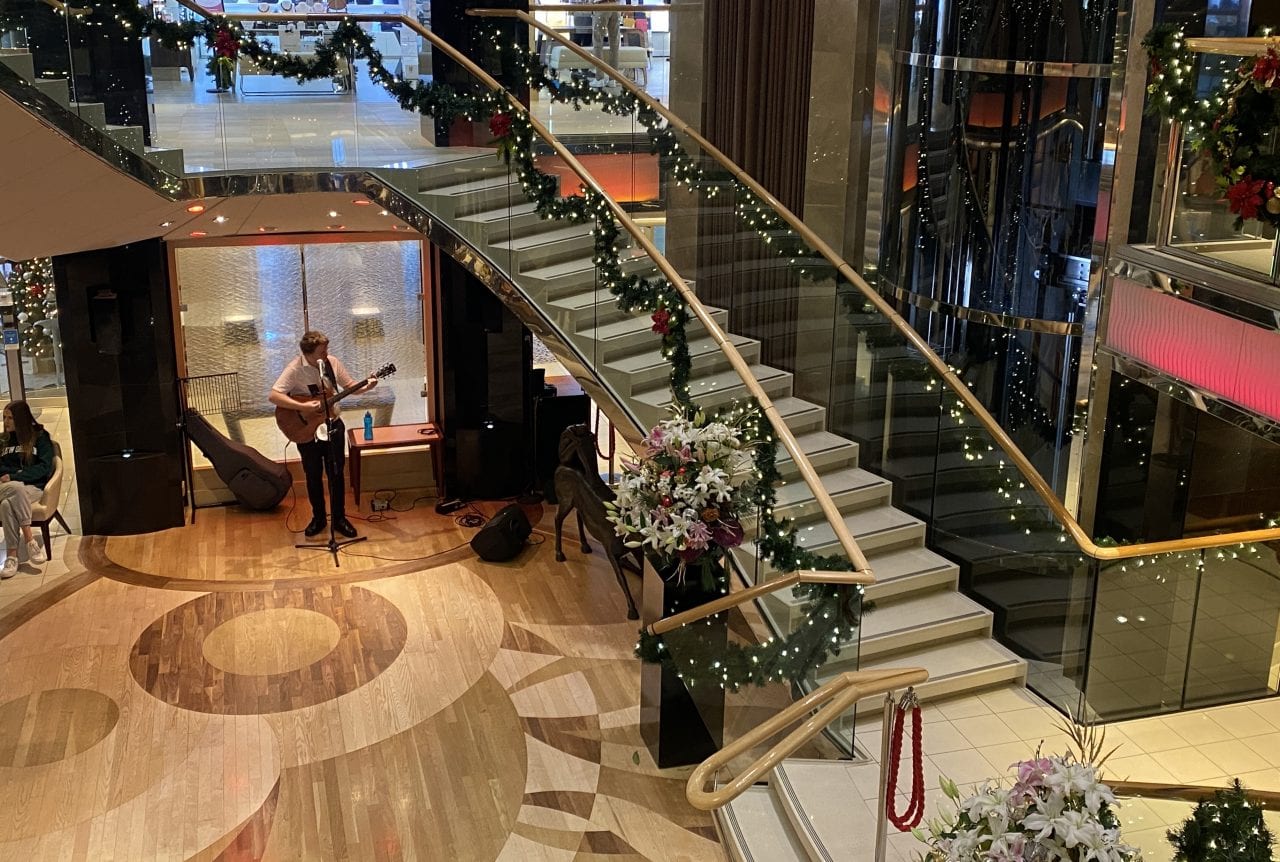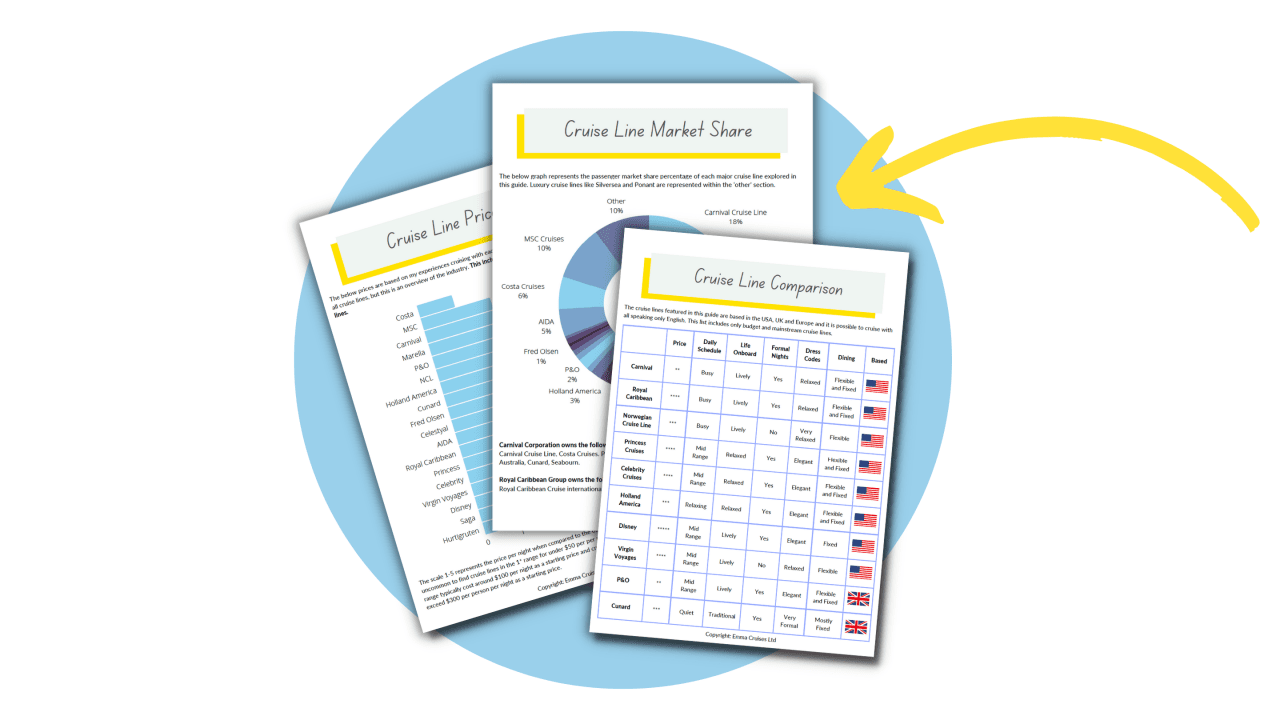People often ask me whether they will feel any movement when they are onboard a cruise ship.
It may surprise you to hear that I am one of the most motion-sick people you are ever likely to meet. I can feel sick in cars and buses, as well as on ships. I can even feel sick when wearing a VR headset!
That doesn’t put me off cruising though, and it shouldn’t put you off either!

Will I Feel The Ship Moving When She Sails?
Generally speaking, no. If you’re out and about, having food, enjoying a show, etc., you tend to forget that you’re not on land.
Many is the time that I have been busy enjoying myself then look out the window to find that the ship is sailing, and I hadn’t even noticed we’d left port!
I think some people assume that being on a cruise ship is like being on a small boat or a ferry. Really, there is no comparison.
Cruise ships are huge; it is hard to realise the scale unless you are standing alongside one on the dock.
They are designed to sail in rough seas, and the majority have stabilisers that can be deployed to stop the ship from moving so much in bad weather.
Which Ships Fare Better In Rough Seas?
As a general rule, smaller, older ships move more in rough seas.
The newest mega ships, which hold over six thousand passengers, are extremely stable. They have all the latest technology onboard, including stabilisers, and they are designed to cope well with rough seas.
I took a trip on P&O’s largest family ship Arvia and it was very eventful. We sailed in October – and had bad weather, a missed port and an emergency medical evacuation – so the ship had to detour quickly to A Coruna in Spain.
Despite all of this, I barely felt the ship move at all in the rough seas, and I certainly didn’t feel at all seasick.
Find out about that memorable cruise here:
Compare that experience to the cruise I took on Fred Olsen’s Bolette. Again, I was sailing out of season (in February) but this time we sailed to Norway in Search of the Northern Lights.
Bolette, over twenty years old, originally sailed for Holland America Line. She takes only a third of the number of passengers than P&O’s Arvia and has had stabilisers retrofitted to make her more stable.
I had a wonderful trip. I did see the Northern Lights, and it was a totally unforgettable experience – but I have never been so sick on a cruise ship!
Her smaller size, coupled with the North Sea Crossing in February, meant that she pitched and rolled – and I felt terrible.
I should say that I have been on over seventy cruises, and it is very rare that I get seasick.
Find out more about that unforgettable cruise here:
Slight Movements You May Notice
Normally on a calm sea cruise ships are stable enough for you to play a game of pool. A lot of cruises have pool tables and it never crosses my mind that the balls would roll!
The dancers/acrobats/circus performers also seem unaffected by any movement.
It is rare that a performance is cancelled due to rough seas. However, on one ship, I remember a lady singer lifted up the bottom of her beautiful long dress to demonstrate that she had chosen to wear trainers rather than her normal high heels due to the movement of the ship! She wasn’t risking falling over!
Your drink won’t be spilling and you won’t be staggering around. (Well maybe, if you have a drinks package, but you can’t blame that on the movement of the ship!)
There are situations, however, when you will notice the ship moving. Long curtains, like the ones in the theatre, you might notice them swaying if the ship is travelling through bad weather.
Similarly, things such as coat hangers may rattle ever so quietly in your wardrobe. This happens to me on almost every cruise I go on, but it still often takes me a few days to find the source of the mysterious rattling sound!

When You Are In Bed
The main time that I notice that the ship is moving is at night when I’m lying in bed.
If you have a balcony cabin the beds are generally placed so that you feel a slight movement back and forth.
Inside cabin beds are the other way around, so you may feel the ship swaying slightly from side to side. The movement isn’t particularly annoying and has never bothered me!
Mostly, the best way to describe the feeling of the ship moving is a very slight vibration rather than a rocking and rolling movement.
You may experience some juddering when pulling into port, which can be a little strange when it happens in the early hours of the morning.
If you are in an inside cabin, it is a good way of knowing you have reached your destination!.
Where Will I Feel The Least Movement?
If you are worried about feeling the movements of the ship or feeling seasick, I would recommend you choose a cabin that is low down and in the centre of the ship.
I remember taking a Christmas cruise on the older P&O ship Ventura and the weather was bad.

We went down to the cafe, situated in the middle of deck 5. Although we could see the sea and the waves rushing by, we could hardly feel any movement.
It was a different story in my cabin on deck 15, where the curtains were swaying and the coat hangers were rattling!
If you are concerned about feeling the movement of a ship, maybe avoid booking winter cruises in areas where rough seas are the norm!
Find out about my Christmas Ventura cruise here:
Before You Go
Find out the best place to book a cabin if you are worried about movement or seasickness here:
What is The Best Cabin Location on a Cruise For Avoiding Seasickness? (I’ve Tried Them All!)
Find out how to avoid feeling unwell on your cruise in the article below:
Staying Healthy When You Cruise, Avoiding Seasickness – Medications and First Aid Items to Pack

Free Insiders Cruise Line Guide
Ever wondered how the mainstream cruise lines compare? Cruise lines won’t tell you this, but I will.
This FREE guide shows you everything you need to know to find your perfect cruise line.
Whenever I take a cruise I order a print of my trip. It uses the real satellite data from the cruise and is always a great conversation starter!
I'm building an impressive collection...
Code EMMACRUISES will get you 10% off

